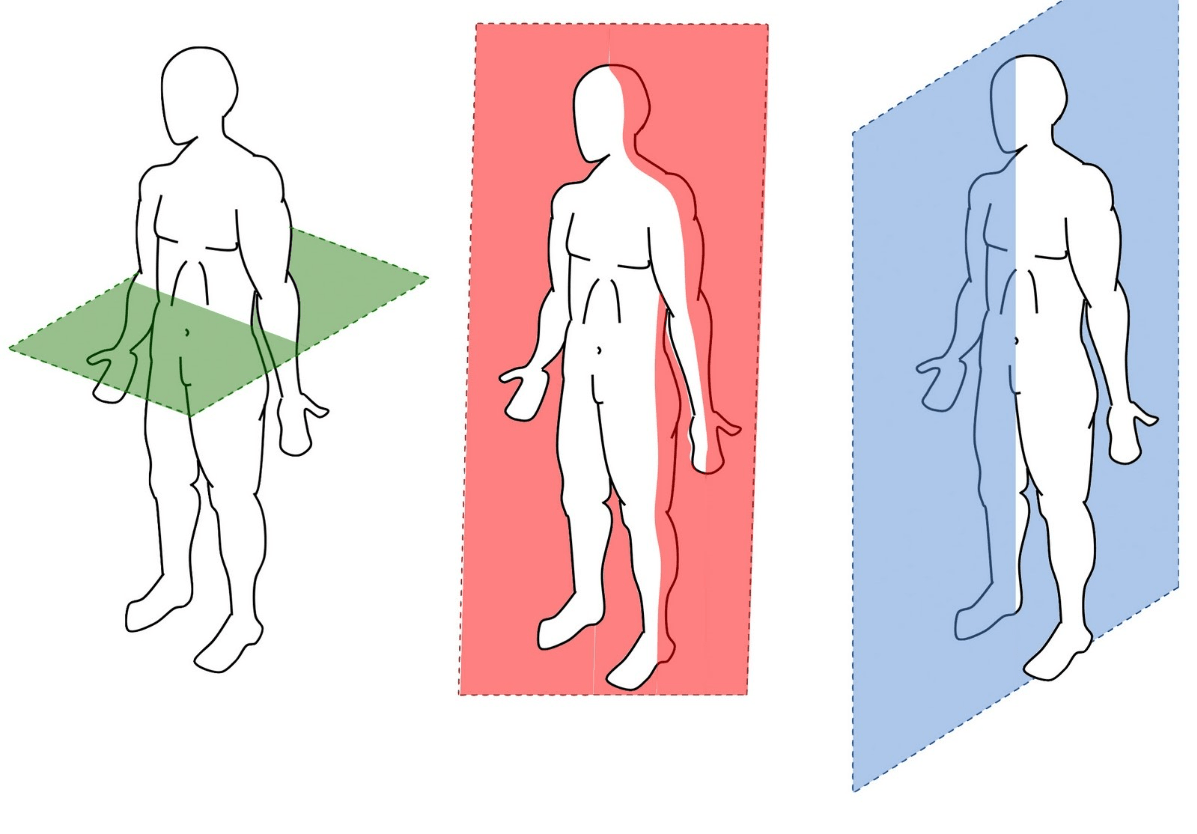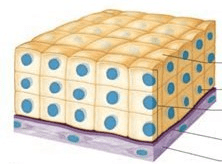Which anatomical plane is colored red in the image below?

Frontal
These are the two most-abundant chemical elements found in organic molecules, also known as hydrocarbons.
carbon and hydrogen
(QUADRUPLE JEOPARDY!)
This term means the study of tissues.
histology
(DOUBLE JEOPARDY!)
This type of membrane lines body cavities that are open to the outside world.
mucous membranes
(TRIPLE JEOPARDY!)
This type of burn involves damage to all three layers of skin.
3rd Degree Burn
What term is used to describe open chambers inside the human body?
cavities
These are the four major biomolecules of life.
carbohydrates, lipids, proteins, and nucleic acids
Blood belongs in this category of tissue.
connective tissue
This pigment in the skin protects the body against the harmful effects of UV radiation from the sun.
melanin
This common fungal infection is characterized by cracked, flaky skin between the toes or side of the foot, spread rapidly in locker rooms and shower floors.
Athlete's Foot
(TRIPLE JEOPARDY!)
What is the smallest building block of all living beings?
cells
(DOUBLE JEOPARDY!)
This part of a cell controls what is contained inside and what moves in and out of the cell.
plasma membrane
Name this type of epithelial tissue.

stratified cuboidal
This bottom layer of skin serves as a repository for adipose tissue, or fat.
hypodermis
This chronic skin disorder involves an overproduction of skin cells, resulting in raised patches of scaly skin, scales, with redness and irritation.
psoriasis
(QUADRUPLE JEOPARDY!)
The state of regulated physiological balance, seen in processes such as sweating, is called ________.
homeostasis
(DOUBLE JEOPARDY!)
These cellular structures produce ATP, the source of the cell's energy.
mitochondria
These are the four types of tissues.
Epithelial, connective, muscle, and nerve tissues
This gland is located all over the body, except for the palms of the hands and soles of the feet, and produce an oily substance called sebum.
sebaceous glands
Name at least three (3) risk factors for skin cancer.
age (older), skin color (light-skin), sun exposure, genetics, chemical exposure
This type of force is a pulling force, as experienced when a person hangs from a pull-up bar.
Tensile Force, or tension
(TRIPLE JEOPARDY!)
This phase of the cell cycle features cell division.
mitosis
This type of muscle tissue undergoes involuntary movements.
cardiac and smoothe
(DOUBLE JEOPARDY!)
This is how often healthy skin makes new skin cells, on average.
~27-30 days
This is the most serious form of skin cancer.
melanoma